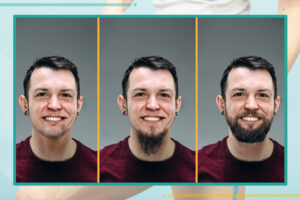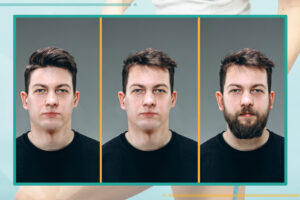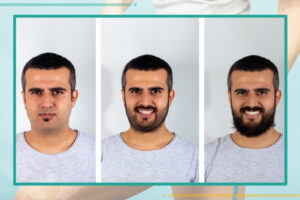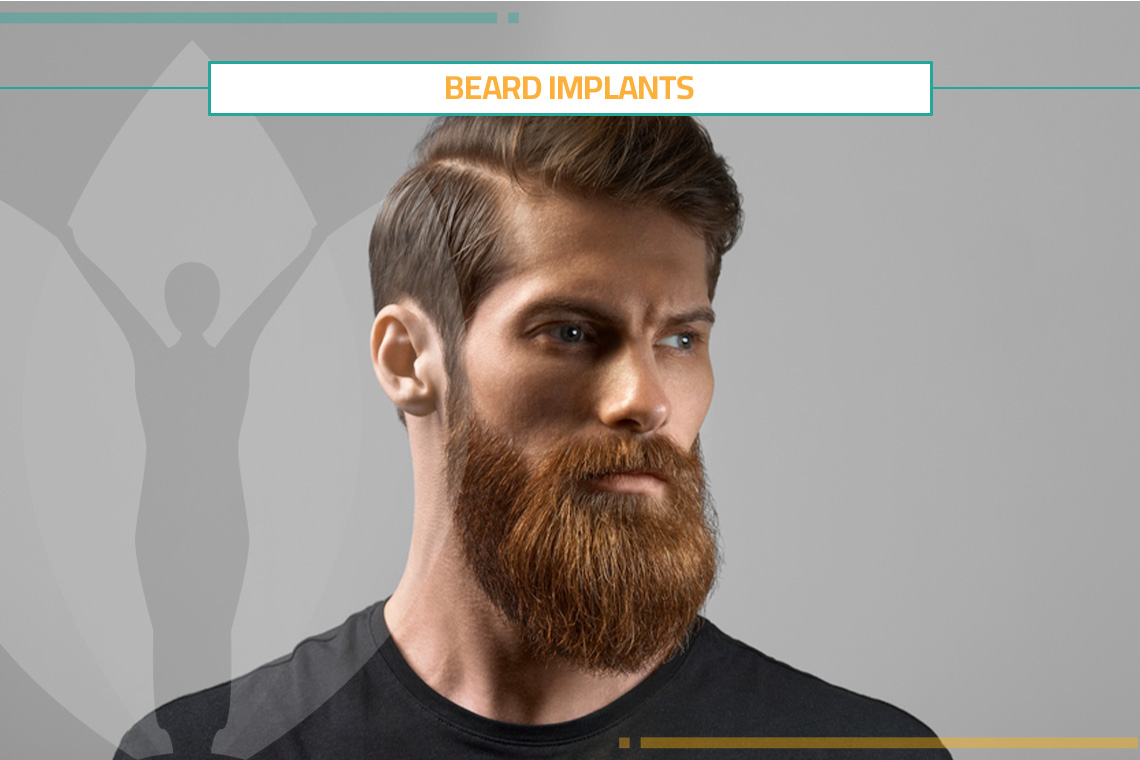Beard Implants
The phrase “Beard Implants” can refer to either transplanting hairs from the beard to other areas of the head and body or moving hairs into the beard to make it appear fuller or more widespread.
To make a beard appear fuller, the first scenario involves transplanting hairs into the beard. Either scalp hairs transplanted into the beard or beard hairs as a source (typically from behind the chin, where the beard is less essential cosmetically) can be used.
The second situation that comes to mind when someone mentions a beard transplant is the use of beard hairs, which are typically removed from the area beneath the chin, to be transplanted to other parts of the body, such as the scalp, etc.
For Whom Is a Beard Transplant Necessary?
If a candidate only wants a fuller beard, the process would need to be tailored to his desired level of fullness, such as a complete “lumberjack” beard or just a “low strap” beard, in which the hairs only slightly protrude past the jawline. A person may also desire a beard transplant if he has lost hair as a result of trauma or scarring and wants beard hairs transplanted into a hair-deficient or hair-free area.
Beard hairs can be used as a source for transplants, such as when the scalp’s donor supply has been exhausted after several previous transplants and the beard is utilized as a salvage source.
Additionally, since beard hairs are resistant to the effects of DHT, a candidate’s age shouldn’t be a major factor in a bread-to-beard transplant.
FUE Beard Transplant
FUE beard transplant involves using a custom trumpet punch to isolate hair grafts from a donor region, which are then trimmed to a uniform size before being implanted into the recipient’s facial area. The process involves shaved hair at the back and sides, with longer hair on top if desired. At Natural Beauty Turkey, patients can choose their preferred beard, goatee, or moustache, considering facial features and current growth. New beard growth typically occurs 6-12 months post-op, with continued hair quality maturation up to 18 months.
What Is Involved in Recovering from a Beard Transplant?
Because a local anesthetic is used during the operation, there is often minimal recovery time following a FUE beard transplant. Although the recipient area will appear somewhat red and swollen for a few days, clients can return to their regular activities after leaving the clinic right away. Following the treatment, you will receive comprehensive instructions on how to take care of the transplanted hair follicles.
Does a Beard Transplant Carry Any Risks?
Scarring following a hair transplant was a concern in the past, but methods have advanced significantly, and a FUE surgery employs extremely precise, fine instruments that should not leave any visible scarring in the donor area. Additionally, there shouldn’t be any scarring on the face or scalp where the hair follicles were transplanted.
Read basic Skin Care Tips for Men
What Is the Purpose of Beard Transplant Surgery?
One type of treatment used for aesthetic purposes is beard implants. Patients who have a more noticeable beard, mustache, or sideburns and wish to enhance the density and contour of their facial hair may undergo beard restoration.
For Whom Is a Beard Transplant a Good Option?
– Individuals with sporadic facial hair
– Appearance of a sparse beard
– Patients seeking beard shaping or filling
Beard Transplantation Side Effects
Although they are rare, possible adverse effects could include:
– Unusual borders or odd angles are examples of graft abnormalities.
– Scarring or overharvesting on donor sites.
– Temporary problems, such as ingrown hairs or infections.
– Selecting a skilled surgeon reduces these dangers and guarantees a speedy recovery and superior results. In Turkey, a large number of skilled doctors who perform beard transplants provide consultations to go over possible adverse effects.
Read about 3 common ways to Reduce Thigh Fat
What Is the Full Beard Transplant Cost in Turkey?
One of the main factors influencing the decision of numerous patients from over the globe to have a beard transplant in Turkey is the expense of the surgery. Turkey is well known for providing excellent healthcare at far cheaper prices than other nations, such as the United States or Europe. A beard transplant usually costs between $2,000 and $2,500, depending on the size of the transplant region, the density of the desired beard, and the equipment and experience of the particular clinic.
Before and After Beard Transplant



After Beard Transplant
Your donor area will be wrapped as soon as your beard transplant is finished. And you will be given a detailed set of aftercare instructions. In the days that follow, your surgeon might also recommend antibiotics and medications. Don’t worry if your chin appears a little scary at this stage; the grafts may be highly noticeable, and you may notice some swelling, redness, and light bleeding in the donor and recipient areas.
You can have some pain and tenderness when the local anesthetic wears off. All of this is normal, though, as your face’s sensitive skin has recently undergone surgery. Additionally, these symptoms will go away in the coming days.
After a beard transplant, the first few days are challenging, with redness, swelling, bruising, and pain in the donor and recipient areas. If an FUT transplant, the donor area may take longer to heal. Over-the-counter painkillers can alleviate the pain. After 2-3 days, wounds from harvested and re-implanted grafts start to scab, making the skin itchy. Resist the urge to scratch to avoid damaging the grafts. Antihistamines can be taken if needed to relieve discomfort.
After Beard Surgery
After a beard transplant, most scabs should fall off and you can safely wash and remove the remaining hair. By the 8th day, shaving is safe, but it is not a guarantee that hair grows faster or thicker. If you experience facial hair transplant shock loss, it is normal. Your new beard will start growing back about 3 months after the procedure. After 2 weeks, you should no longer experience significant side effects like pain, swelling, or itching. If you notice any concerning symptoms, contact your surgeon for advice. You can safely perform most pre-transplant activities. But discuss it with your surgeon if you plan to perform strenuous physical activities.





